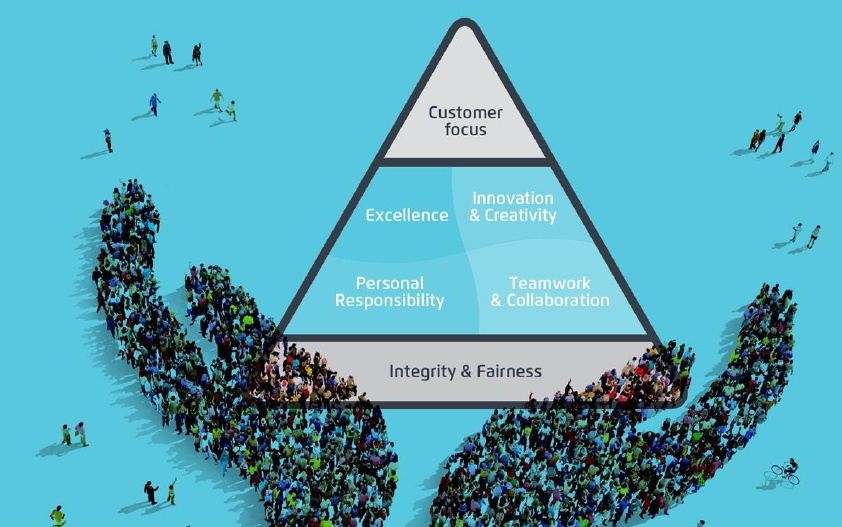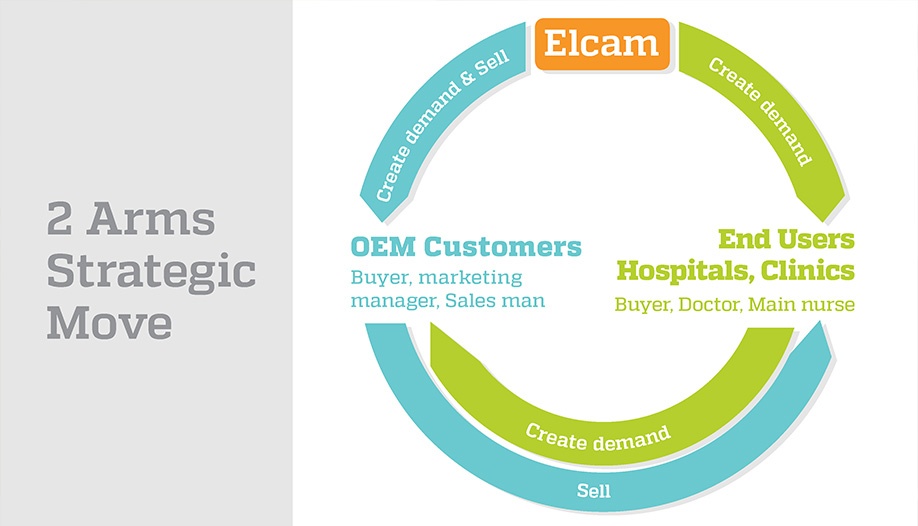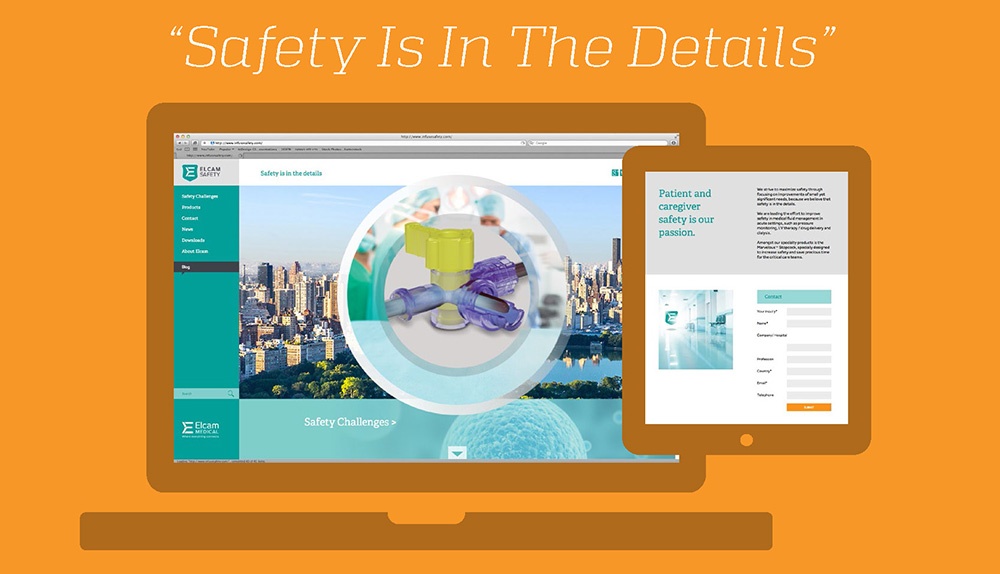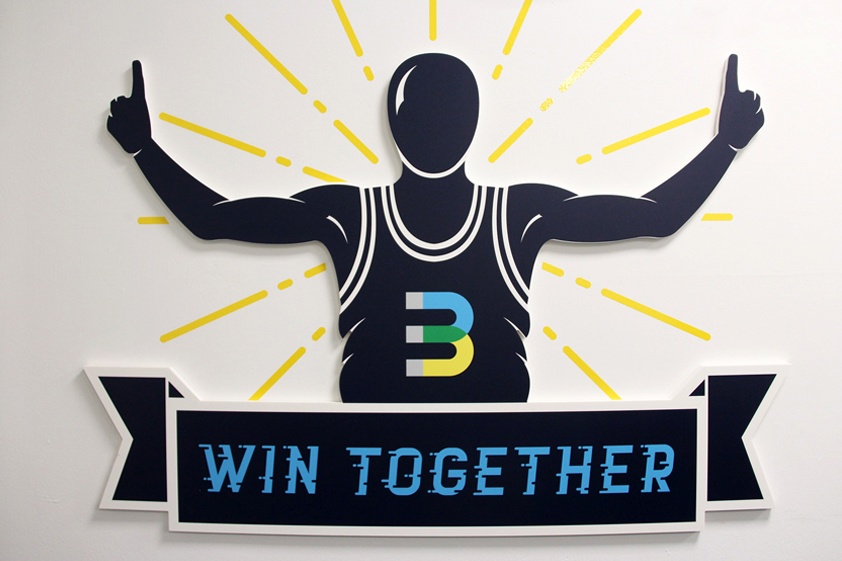Dina Gidron

Dina Gidron Recent Posts
Moving to a business-to-business-to-user mindset (B2B2U©)
By
Dina Gidron
, 10/09/2017
Communicate with both intermediary customers and patient-consumers in this new age of healthcare by transitioning to a Business-to-Business-to User model.
min read
We're entering a new age of healthcare, the "Social Health" era, where the focus has shifted to informed patient-consumers. With ever-increasing access to information, our patient-consumers are now empowered more than ever to make choices for themselves by researching and even shopping online for everything from health plans and doctors to medical equipment and insurance policies.
As the digital revolution disrupts the way we've traditionally done business in the medical and healthcare space, there is a need to communicate with both intermediary customers (payers) and patient-consumers. This means transitioning from a more traditional Business-to-Business (B2B) model into a newer Business-to-Business-to User (B2B2U©) model. Because at the end of the day, even if you aren't selling directly to your patient-consumers, you still need to engage with them to understand their challenges, meet their needs and ultimately create bottom-up demand for your brand.
This move to a B2B2U model starts with identifying your patient-consumers and gathering information about their challenges. Once you’ve identified them, you can then open up direct channels of communication with them, offer them valuable information and also show them how your services or products offer real value and help solve their challenges.
One of the challenges in this approach is making sure that you don’t compromise your relationship with your paying customers when you start communicating directly with your patient-consumers. This can be solved by involving them in the process and maintaining full transparency about your goal, that is, to raise brand awareness and drive demand (and not to sell directly to patient-consumers).
Interested in learning more about how you can create a win-win situation for both you and your intermediary customers?
“Branding In” in International Branding
By
Dina Gidron
, 15/05/2017
The answer lies in understanding the clear link between your B2B brand and your employees’ connection to your brand promise
min read
We’re all aware (at least most of us) of the crucial role that B2B brands with a clear correlation to core company values play in business growth and expansion. But what happens when we achieve what we want and start expanding internationally?
 When Maytronics, a global leader in automated pool cleaning solutions, began to expand globally, the company looked for ways to build a strong and growing global brand while still maintaining a unique company culture, value, and DNA.
With a focus on its core values, Maytronics and Oz Branding began a worldwide organizational and branding process that included the enhancing of the internal company dialog to reinforce its brand promise of Exceptional Experience.
When Maytronics, a global leader in automated pool cleaning solutions, began to expand globally, the company looked for ways to build a strong and growing global brand while still maintaining a unique company culture, value, and DNA.
With a focus on its core values, Maytronics and Oz Branding began a worldwide organizational and branding process that included the enhancing of the internal company dialog to reinforce its brand promise of Exceptional Experience.
How can we ensure that we don’t lose or dilute our essential values and brand promise as we become a cross-continent corporation?
The answer lies in understanding the clear link between your B2B brand and your employees’ connection to your brand promise – no matter where they are in the world.By focusing on both implementing your brand in the global marketplace and strengthening your brand within your organization, you can more easily coordinate cross-continent corporate cultures and processes to define a common global branding language and presence that is consistently implemented across all touch points and markets. When Maytronics, a global leader in automated pool cleaning solutions, began to expand globally, the company looked for ways to build a strong and growing global brand while still maintaining a unique company culture, value, and DNA.
With a focus on its core values, Maytronics and Oz Branding began a worldwide organizational and branding process that included the enhancing of the internal company dialog to reinforce its brand promise of Exceptional Experience.
When Maytronics, a global leader in automated pool cleaning solutions, began to expand globally, the company looked for ways to build a strong and growing global brand while still maintaining a unique company culture, value, and DNA.
With a focus on its core values, Maytronics and Oz Branding began a worldwide organizational and branding process that included the enhancing of the internal company dialog to reinforce its brand promise of Exceptional Experience.
Overcoming Global Borders
By
Dina Gidron
, 14/05/2017
A Case Study in Effective Online and Offline Marketing. Trends in online marketing, Microtargeting, mobile, content, Amplification and Old-school marketing
min read
A Case Study in Effective Online and Offline Marketing
Note: This is the last of a 5-part series on our annual international B2B marketing conference this past November. Read Part 4 here. As VP Strategy at Oz Branding, I decided to share our experience with Elcam Medical at the Global Marketing Challenges for B2B Companies conference, as it demonstrated the importance of combining both online and offline marketing approaches. Before delving into the Elcam Medical case study at the conference, howev er, I thought it important to remind you of five important trends in online marketing:- Microtargeting – which involves finding a specific subset of customers in your marketplace
- Mastery of mobile – Mobile will dominate your market, no matter what the industry.
- Quality content – You'll need to fill that mobile channel with quality content, not to mention all of your other channels (and differentiate between these channels).
- Amplification – You'll also want to figure out how to amplify that content so it reaches as many potential customers as possible.
- Old-school marketing – Nothing beats face-to-face interaction.

Elcam Medical– No Longer "Just" an OEM
Now that we have those trends in mind, I want to introduce you to Elcam Medical, a medical device company that is a world leader in medical stopcocks. This fluid control application is part of a larger set sold to a hospital through a multinational company. Elcam Medical, whose humble beginnings started at Kibbutz Baram, is a well-known OEM in the medical device industry. The challenge is creating awareness of the product to the end user who benefit from the patient safety and time-savings measures the device offers. Once the end users recognized the brand more, they would be able to create additional demand from the market, rather than relying solely on OEM representatives that may have a different agenda. How then could Elcam Medical go about positioning itself to be recognized more by the end users, in this case, ICU nurses in the medical device equipment industry? Oz Branding has been working with Elcam Medical for the past 4 years. In this case, we helped them devise a two-pronged strategy. The first challenge was to identify and understand their end user, a microtarget of ICU nurses, and develop channels to communicate with them. The second was to continue to strengthen its brand recognition with big multi-national companies, who are purchasers of Elcam Medical, but are familiar with it only as an OEM. The purpose of this two-pronged strategy was to create demand with regular companies, and spark a conversation of why this product's value is high enough to justify raising its price. With increased demand generation, sales would rise.
The purpose of this two-pronged strategy was to create demand with regular companies, and spark a conversation of why this product's value is high enough to justify raising its price. With increased demand generation, sales would rise.
A Risky Yet Effective Strategy
The approach Oz built with them was dramatic and involved big decisions. In truth, multi-national companies don't want suppliers talking to customers. The question became how Elcam Medical would implement its strategy without damaging customer relations. First, all project work was done with complete transparency between Elcam Medical and its customers. The customers understood Elcam Medical would not sell directly to the hospitals and since there was no conflict of interest, sales have increased as a result of this project. Secondly, the idea was to focus on a concept of concern to end-users which wouldn't affect the suppliers. Fortunately, this concept had already been thought of and built into the product and reflected in the Marvelous stopcock, specially designed to increase safety and save precious time for the critical care teams. In order to have this concept strengthen the entire brand rather than one specific product, a designated website was created to promote Elcam Medical's most important feature for the ICU nurses: patient safety. This turned out to be the main benefit for end users. They wanted to know: How did Elcam Medical ensure patient safety? That became the agenda of the website – to position Elcam Medical as experts in insuring safety in the hospital environment, especially within the ICU.
As new products develop they will also be shown on the website. More than just a promotion of the company's latest technology, the website helps to share a lot of professional data and information among medical professionals.
In order to identify the issues and concerns Elcam Medical's end users face, 12 LinkedIn groups were identified and scoured. Blog articles were written and posted to this website addressing these topics and continue to be expanded upon. For even wider distribution and increased awareness, professional online publications are approached with these same topics, helping to position Elcam Medical as leaders in patient safety.
This turned out to be the main benefit for end users. They wanted to know: How did Elcam Medical ensure patient safety? That became the agenda of the website – to position Elcam Medical as experts in insuring safety in the hospital environment, especially within the ICU.
As new products develop they will also be shown on the website. More than just a promotion of the company's latest technology, the website helps to share a lot of professional data and information among medical professionals.
In order to identify the issues and concerns Elcam Medical's end users face, 12 LinkedIn groups were identified and scoured. Blog articles were written and posted to this website addressing these topics and continue to be expanded upon. For even wider distribution and increased awareness, professional online publications are approached with these same topics, helping to position Elcam Medical as leaders in patient safety.


Online and Offline Equals 100% Success
The best approach combines online and offline marketing. Simply put: You have to get out there. In contrast to attending the usual larger medical conferences and big trade shows, Elcam Medical started to attend more targeted professional conferences of nurses, albeit with a smaller booth. Whenever possible, they tried to generate awareness by getting on the lecture panel at the conference. Of course, paid online advertising promoting these conferences helped, but at the end of the day, online activity leads to offline activity, which leads to a personal relationship. As a result of this two-pronged branding strategy, many personal relationships have developed, both between Elcam Medical and the end user, as well as between Elcam Medical and suppliers. As an example of the results generated from this type of online and offline approach, I read an email we received from a big company representative who wrote to one of Elcam Medical's representatives she had met at a critical-care nursing conference:
This email was sent just 6-8 months into the branding process, the results are still in process.
The shift is dramatic in that it has changed the rules of the game – Elcam Medical now talks to nurses directly, creating its own relationships with the end user, which in this case, resulted in a huge amount of leads from one particular nursing conference. It shouldn't be a surprise that sales increased by 35% in 2015, the same year that Oz started working with Marvelous. As a takeaway from the conference, I believe that this combination of online marketing and the creation of offline personal connections can move many Israeli companies further into the international marketplace than they are today. As they expand and move abroad, I'd like companies to remember this combined approach when considering how to overcome global borders.
This is the last post in our series about the annual international B2B marketing conference this past November.
As a takeaway from the conference, I believe that this combination of online marketing and the creation of offline personal connections can move many Israeli companies further into the international marketplace than they are today. As they expand and move abroad, I'd like companies to remember this combined approach when considering how to overcome global borders.
This is the last post in our series about the annual international B2B marketing conference this past November.
Your Employees as Your Main Brand Ambassadors
By
Dina Gidron
, 14/05/2017
Yes - your employees. They are one of the most important success factors of your brand implementation. They are your most significant brand ambassadors.
min read
As part of our focus on B2B branding as the core of what makes your company beat – a reflection of who you are, what you do, how you do it, and why you do it — we’d like to zoom in on one of the most important factors in pulling it all together and actually making it work: your employees.
Yes - your employees. They are one of the most important success factors of your brand implementation. They are your most significant brand ambassadors.
By nurturing your employees’ connection and commitment to your corporate values, you can directly influence the strength of your B2B brand and your ability to fulfil your brand promise to your customers.
 To achieve this, you need to focus efforts on:
To achieve this, you need to focus efforts on:
 To achieve this, you need to focus efforts on:
To achieve this, you need to focus efforts on:
- Only recruiting employees who believe in what you believe in.
- Engaging your employees by creating a challenging and fulfilling work environment that encourages innovation and maintains a healthy work-life balance.




























